08 DAYS OF INDIA DELUXE GOLDEN TRIANGLE and RANTHAMBORE
from 0 review
Duration
08 Days
Tour Type
Daily Tour
Group Size
Unlimited
Languages
___
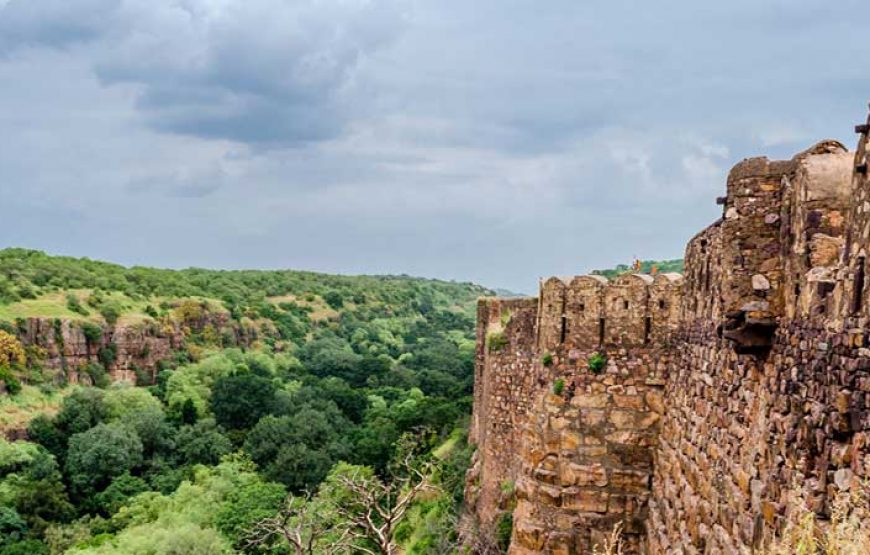
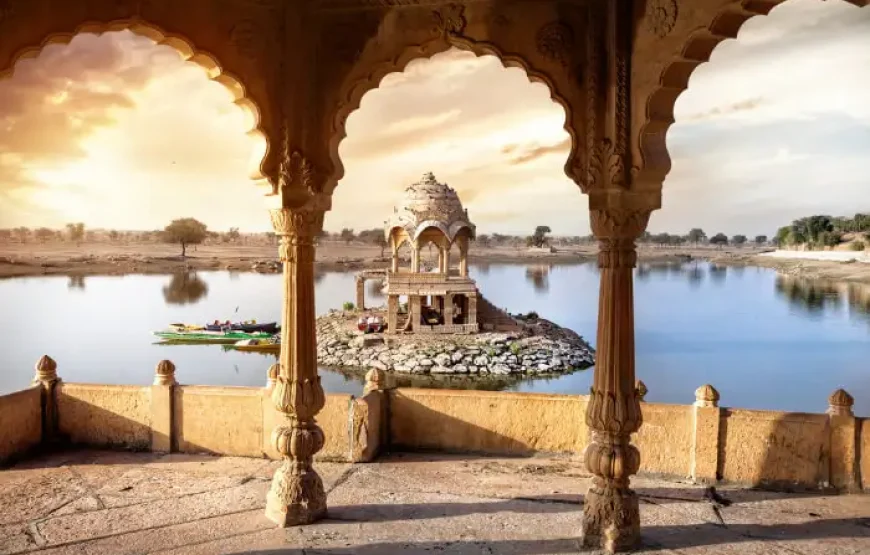
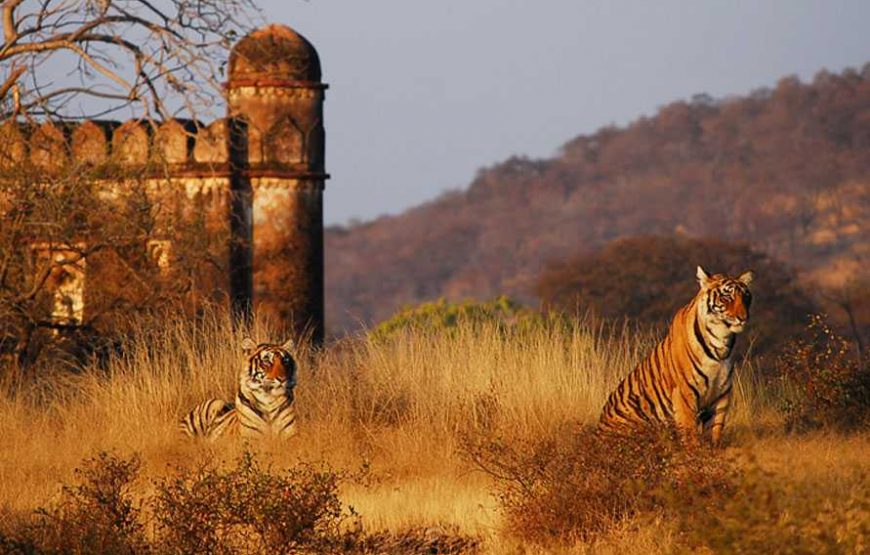
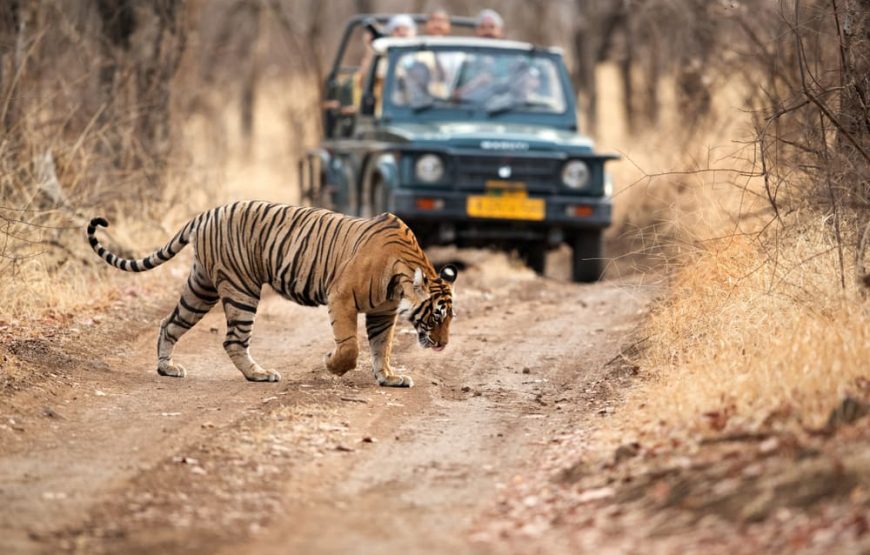
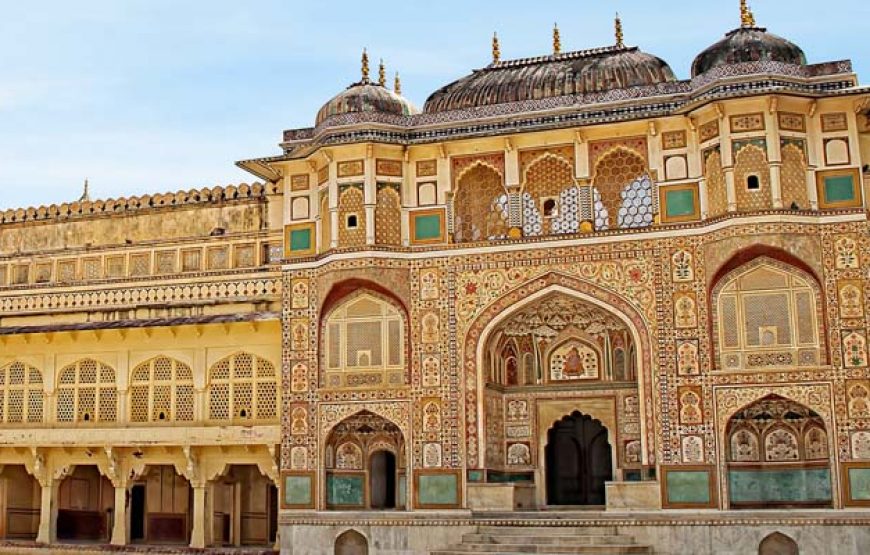
Style:
Deluxe | Private Guided
Rajasthan is not only about the rich culture and heritage. It is also about the rich geo-bio diversities and as a result of this unique blend of culture and nature comes to the golden triangle tour with Ranthambore. This mesmerizing tour will make your tour memorable with the beautiful memories of the rich heritage sites of the three most beautiful cities along with the most prominent wildlife reserve, which is known as Ranthambore National Park. This is a beautiful place that is filled with all sorts of flora and fauna which are rare to see in daily life. Along with that, you will be seeing the most exotic species of vegetation that works as medicine sometimes for the animals that lived here.
DEPARTURES:
Every day, barring Wednesdays. Due to the Ranthambore summer closure, the tour is not available from June 23 to October 1.
DOCUMENTATION:
Scannable color copies of passports must be supplied one month before traveling in order to access Ranthambore National Park.
TERMS AND CONDITIONS:
Prices are “from” per person depending on the twin or double occupancy and low-season vacation. Blackout dates and seasonal fees can be present. There are just a few seats available, and all prices are subject to availability. Please inquire about rates for single, double, or triple travelers.
HIGHLIGHTS
- Travel to imperial Delhi, the magnificent Taj Mahal in Agra, and the magnificent Amber Fort in Jaipur, and then have a safari at the Ranthambore Tiger Sanctuary.
- India's Golden Triangle is so named because the three major tourist destinations of Delhi, Agra, and Jaipur are connected, forming a triangular shape on the map.
- The capital's Old and New Delhi neighborhoods make up Delhi. With its tiny, meandering back lanes, vibrant Old Delhi, which is alive with people, has a very powerful vibe. Visit the majestic Red Fort, a city within a city, the significant and lovely Jama Masjid Mosque, and the peaceful location of Mahatma Gandhi's cremation.
- After that, it's time to travel to New Delhi to visit the magnificent India Gate on the Rajpath, the Presidential Palace, the historic tower, the Qutub Minar, and Humayan's Tomb, which is home to the remains of several former emperors.
- The following day, travel to Agra by road across rural India. The Agra Fort will be explored after the stunning and magnificent Taj Mahal.
- Take a train from Agra to Bharatpur, stopping in Fatehpur Sikri, the ghost city with a tale, along the way. Reboard the train, go to the erstwhile hunting grounds of the Maharaja, Ranthambore National Park. Enjoy two jungle safaris here to see the local wildlife, which includes tigers, leopards, hyenas, and a variety of tropical birds.
- Visit the Dastkar Center and the ancient Ranthambore Fort to see a variety of handicrafts.
- The city of Jaipur is the next stop. Start by riding an elephant to the majestic Amber Fort, which is located high on a hill overlooking the surrounding area. When you get back to the city, see CityPlace, the intriguing old observatory Jantar Mantar, and the Palace of Winds. You can travel to a bazaar and a local market on a pleasant rickshaw ride.
Day 1: ARRIVE IN DELHI
Welcome to Delhi, the capital of India and a key entry point into the nation. Delhi is a bustling metropolis that successfully blends the ancient and the modern. The region's numerous monuments serve as silent reminders of the area's old past among the quickly rising skyscrapers. Any visitor arriving from the airport will have their first impressions of a grand, garden city that is tree-lined and home to several lovely parks.
You will be greeted and driven to your hotel as soon as you arrive.
*2 Nights in length
DAY-2: DELHI SIGHTSEEING
The Red Fort, a representation of Shah Jehan's Mughal strength and grace and regarded as the greatest wonder of all the cities of Delhi, is the first stop on your morning tour of Old Delhi.
This fort has a long and important history in India. The last Mughal ruler, Bhadur Shah Zafar, was overthrown by the British from this location, bringing an end to the three centuries of Mughal reign. The first prime was also launched from its ramparts. Pandit Jawaharlal Nehru, India's minister, declared to the country that colonial rule was over. The next stop on your trip is Jama Masjid, the biggest mosque in India. It was formerly referred to as Masjid-I-Jahan-Numa, or "The mosque with a commanding outlook of the world."
Shah Jehan, the Mughal emperor, ordered the construction of this mosque, which was finished in 1656.
You will tour New Delhi or "Lutyens" Delhi this afternoon. As you drive through the city, take in the President's House and Parliament House. Additionally, drive past the government structures and stop at India Gate. All of the main structures were created by British architects Lutyens and Baker in the 1920s and were constructed by the British as an imperial capital.
The War Memorial Arch, also known as India Gate, is a monument to the 90,000 Indians who lost their lives in World War I and is located at one end of the Rajpath (formerly known as the "King's Way") boulevard.
The vast Secretariat buildings with their 1,000 rooms and miles of corridors, as well as the Parliament House, a massive circular building in red and grey sandstone with an open colonnade extending around its perimeter, are our first sights as we travel along the majestic Rajpath, the broadest avenue in Delhi. The Rashtrapati Bhawan, one of the biggest and most opulent Raj structures erected initially for the British Viceroy and now the official house of the President of India is situated at the other end.
proceed to the tomb of Humayun. This majestic structure made of red sandstone contains the grave of Emperor Humayun, the father of Emperor Akbar. The building's design and construction were overseen by Haji Begum, Humayun's first wife and the mother of Emperor Akbar.
Her design was considerably ahead of its time and served as the inspiration for the famed Taj Mahal, which was constructed almost a century later!
Visit Qutab Minar, the tallest stone tower in India, to cap off your journey. Some people believe that the "Tower of Victory," which stands 234 feet tall, is the most ideal example of tower construction in existence. This structure is a mathematical marvel that has stood for eight centuries. The Quwwat ul-Islam Mosque, often known as "The Might of Islam," is another significant structure in the complex. Although the mosque is in ruins today, it is thought that 27 Jain temples were destroyed and their materials were utilized to build the complex's monuments.
*Breakfast on the menu
DAY 3: DELHI TO AGRA
You will go to Agra this morning, the Mughals' 16th and 17th-century capital. Many of the most well-known structures built by the Mughals are still located in Agra. Many of the city's attractions date back to the Afghans, who lived there before the Mughals, and the city has long astounded tourists.
Once there, head to your hotel.
You'll visit the Agra Fort later today. situated on the Yamuna River's curve. Over the course of 1565–1703, Emperor Akbar constructed it as his stronghold. This beautiful fort dominates the heart of the city with its massive gates, red sandstone walls, and moat. Three different Mughal Emperors, in order, constructed the fort: Emperor Shah Jehan constructed the spectacular imperial quarters and mosque, while Emperor Aurangzeb rebuilt the outer ramparts. Emperor Akbar the Great built the walls, gates, and initial buildings. It is essential to stop by the Royal Pavilions and the Hall of Public Audience. Aurangzeb imprisoned his father, Shah Jehan, at the Agra Fort near the end of his life; this was a light penalty given the opulence of the fort. A marble balcony in a tower with a stunning view of the Taj Mahal is where legend has it that Shah Jehan passed away.
To the Taj Mahal, keep going. Before visiting the Taj Mahal's interiors, visitors are instructed to take off their shoes.
The white marble was quarried 200 miles distant and brought to the construction site by a fleet of 1000 elephants, taking 22 years and 20,000 men to complete. Shah Jehan, the Mughal emperor, erected Mumtaz Mahal as a memorial to his loving wife (literally translated as Jewel of the Palace). He became increasingly involved with his other major love, architecture, during the two years he spent in grief after she passed away at the age of 39 while giving birth to her fourteenth child. Enjoy the beautiful, complex marble inlay work! According to legend, the cenotaphs were set with diamonds. Mumtaz's shroud was draped with a blanket made of pearls. The cenotaphs once had a gold railing around them; this was later swapped out for a marble one. The dome allegedly had a full or partial gold leaf covering.
Retire to your hotel for the remainder of the day.
Breakfast Meal Plan for One Night
DAY-4: AGRA TO RANTHAMBORE NATIONAL PARK
Early this morning, head to the train station to catch your train to Bharatpur. On the way, stop at Fatehpur Sikri, also known as "The City of Victory," an abandoned red sandstone city that was constructed in the late 16th century as the capital and palace of the Great Mughal Emperor Akbar. The Mughal Empire only had Fatehpur Sikri (the City of Victory) as its capital for around ten years. When the nearby wells dried up, it was abandoned not long after construction began, and it is still much in the same state as it was more than 300 years ago. It was once a town bigger than London when it was first built, and it is complete with palaces and mosques. After arriving in Bharatpur, proceed to a nearby resort for lunch.
Later, proceed to the train station to catch your train to Sawai Madhopur, where the Ranthambore National Park is located. Originally the Maharaja of Jaipur's hunting reserve, it was designated a game sanctuary in 1955. This park was included in Project Tiger in 1972, and in 1980 it was designated as a national park. One of the greatest places to see tigers up close is Ranthambore, where viewing distances can go as low as 30 feet.
You will be greeted and driven to your resort as soon as you arrive. You'll receive dinner at the resort.
Breakfast, lunch, and dinner are included in the meal plan.
DAY-5: RANTHAMBORE NATIONAL PARK
You will take part in a pre-arranged game drive across the Ranthambore National Park this morning at an early hour. A naturalist will be with you at all times. Wildlife photography enthusiasts should take advantage of the current situation.
There are many animals in this park, including antelopes, nilgai, sambhar, and chital are frequently seen (different species of deer). Many additional creatures, including the sloth bear, wild boar, porcupine, jackal, leopard, jungle cat, and crocodile, can be seen down near the lake and around the water holes. There are approximately 300 distinct types of birds in the park, which is home to a vast number of them.
It's also a wonderful experience to view these majestic animals in the wild. One of the best places to get a close-up view is Ranthambore. They are frequently seen throughout the park, especially in the early morning. The most fortunate visitors might be able to observe tigers hunting and females caring for their cubs.
After lunch, head back to your hotel. You'll embark on another gaming drive this afternoon. The resort serves dinner.
Breakfast, lunch, and dinner on the menu
DAY 6: RANTHAMBORE TO JAIPUR
This morning, you will take in a tour of the Ranthambore Fort, which is perched atop a hill and frequently covered in mist during early morning wildlife drives. Its millennium-old ramparts offer a breathtaking panorama of the surroundings. The fort was constructed by the Mughals and presented as a gift to the Maharaja of Jaipur in the seventeenth century. The Hammer Court is renowned for its acoustics; even a whisper can be heard at the opposite end of the building. Its stunning interiors showcase intricate craftsmanship. The Gupt Ganga, a set of steps carved into the rock that descends to the source of an eternal stream, must also be visited. Continue by paying a visit to the nearby Dastkar Center, which was established as a means of generating revenue for the women craftspeople in the hamlet. This organization's main goal is to use local resources and craft skills to produce goods that would provide employment and revenue without upending the established systems of village life or interfering with the producers' ability to perform other agricultural and domestic tasks.
Patchwork pillows, blankets, lacquer bangles, ornate potholders, scarves, terracotta ceramics, and rag rugs are just a few of the finely crafted items you can view while there.
After that, you continue your tour in Jaipur, a city where history is never far away.
The city of victory, Jaipur, rules over the interesting desert state and its inhabitants. Surrounded by rocky hills, each of which is topped by a powerful fort, Jaipur is also home to stunning palaces, houses, and gardens. The palaces and forts of the past, which were the scene of regal processions and majesty, are now living monuments that have been assimilated seamlessly into the way of life of the inhabitants of the "pink city." Jaipur, where the past is never far away. The city of victory, Jaipur, rules over the interesting desert state and its inhabitants. Surrounded by rocky hills, each of which is topped by a powerful fort, Jaipur is also home to stunning palaces, houses, and gardens. The palaces and forts of the past, which were the scene of regal processions and majesty, are now living monuments that have been assimilated seamlessly into the way of life of the inhabitants of the "pink city." The people and bazaars of Jaipur have a timeless appeal. Jaipur brings back old Rajput legends thanks to its rich history.
Arrive, go to your hotel, and spend the remainder of the day as you please.
Meal Plan: Breakfast; Length of Stay: 2 Nights
DAY 7: JAIPUR SIGHTSEEING
You will travel to Amber Fort in the morning while driving through the streets of Jaipur, stopping along the way to see and photograph the Palace of Winds. The Palace, which was finished in 1799, was first constructed to give the court ladies isolated views of the city's lively activity. Because of the facade's perforated screen that allows for a pleasant wind, or Hawa, it is also known as the Hawa Mahal.
To the Amber Fort, keep going. The fort conjures up images of mythology and fairy tales as it sits on the crest of a rough hilltop overlooking Lake Moata. Sandstone in both white and red colours was used to build the fort.
The Fort is distinctive in that its interior, an elaborate, luxurious space influenced by both Hindu and Muslim decoration styles, is very different from its outside, with an intimidating and rugged military construction. The interior of the fort is decorated with murals, frescoes, and paintings that show a variety of everyday themes. Other walls are adorned in minute mirror work, mosaics, and delicate carvings.
You will tour the city this afternoon. Your itinerary starts with a trip to the City Palace complex, which still exudes the opulence of a bygone period. The City Palace is a stunning showcase of Hindu and Mughal architecture, offering an endless stream of delights from its imposing entryway to the dancing of beautiful fountains.
A museum with lots of examples of grandeur is one of the Palace's attractions.
Jantar Mantar, which means "Calculation Instrument" in English, is located next to the city palace. Maharaja Jai Singh constructed Jantar Mantar between 1728 and 1734, and it was a spectacular construction that was well ahead of its time. This was designed after the one that was erected in Delhi, the former capital of the Mughals. Of the five that he had built, the one in Jaipur is the largest.
Take a cycle rickshaw to explore the nearby markets after your tour! Jaipur is known for its gems and jewellery, 'Meenakari' (enamel work), vintage, hefty silver jewellery, precious and semi-precious stones set in gold, Colombian emeralds that are actually brought to Jaipur for cutting and polishing and are offered at affordable costs. Additionally discovered items include rugs, "Pechwai" small paintings on silk and paper, a special kind of blue pottery, and even glass bracelets! In terms of textiles, there are brocades, tie-dyes, block prints, and the renowned "mirror work" embroidery, which is also employed on tablecloths, throw pillows, and ready-to-wear clothing. Go back to your hotel. *Breakfast Plan
DAY 8: DEPART DELHI
You will be transported back to Delhi after a leisurely breakfast. When you arrive, head to the airport to catch your next trip.
*Breakfast on the menu
- Private airport shuttles for arrival and departure
- 2 nights in a five-star hotel in Delhi
- Agra's one-night stay in premium accommodations
- 2 nights in a luxury hotel in Ranthambore National Park
- 2 nights in a luxury hotel in Jaipur
- Private sightseeing according to the schedule with an English-speaking guide
- Chauffeured service in a cooling car
- Ranthambore has two game drives.
- Air-conditioned chair car train fare from Bharatpur to Sawai Madhopur
- Daily breakfast (apart from day 1), two lunches, and two supper
- Travel protection
- Unless specified in the itinerary, international and domestic airfares as well as airfare taxes
- If necessary, visas
- Meals and drinks, unless otherwise specified in the schedule
- Things with a personal touch

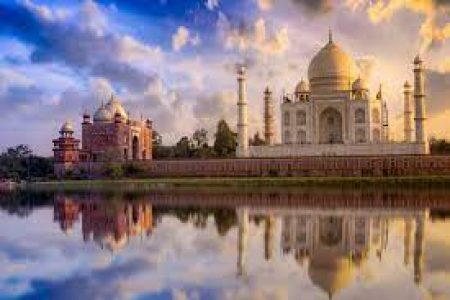
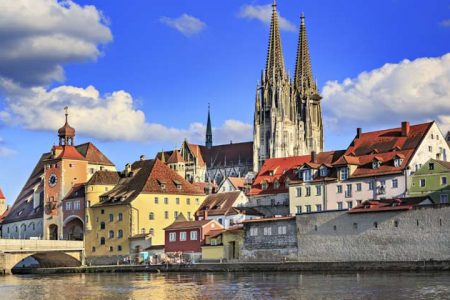
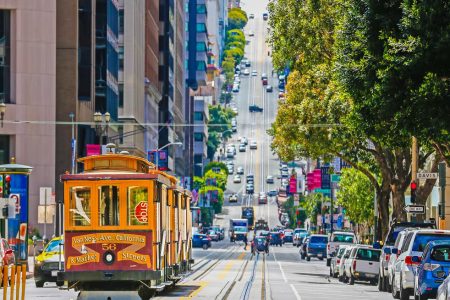
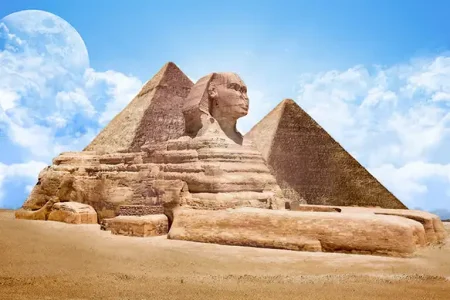
Leave a reply